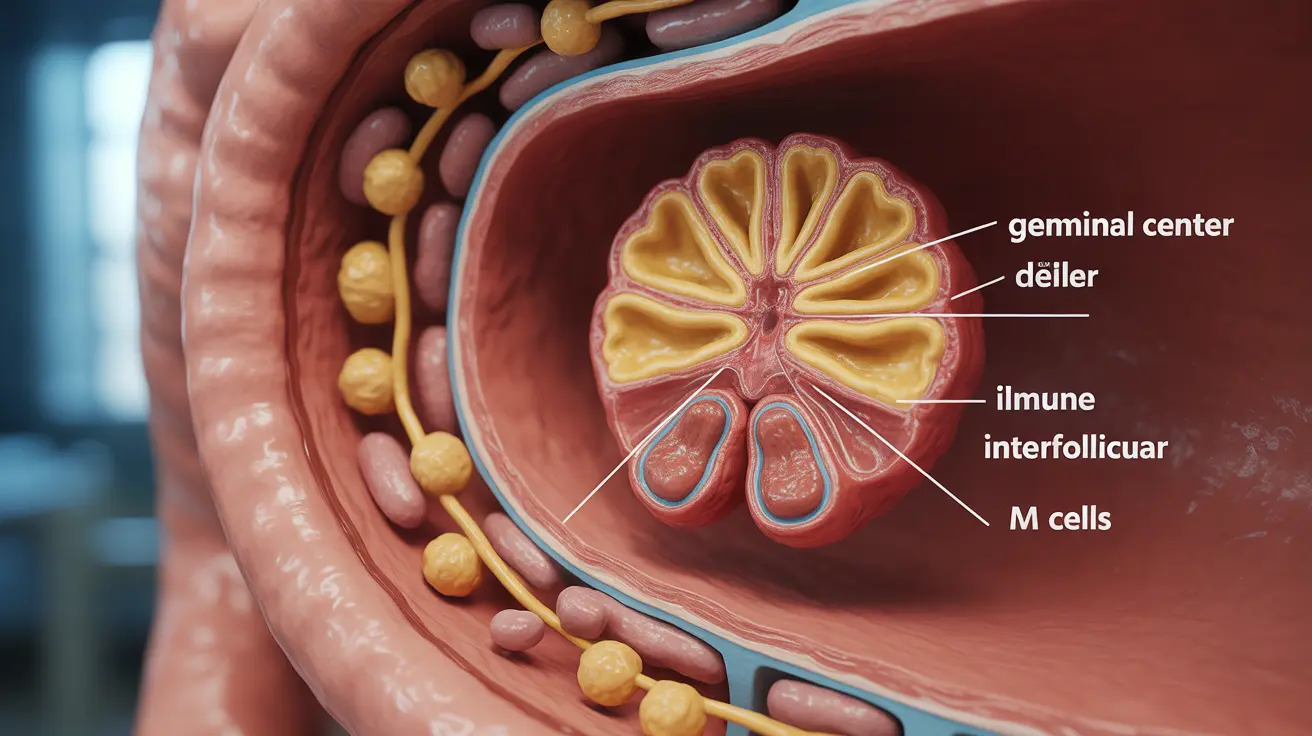Deep within your intestinal tract lies a remarkable network of immune tissue called Peyer's patches. These specialized structures serve as vital surveillance centers, helping your body maintain a delicate balance between fighting harmful pathogens and tolerating beneficial substances in your digestive system.
As key components of your gut-associated lymphoid tissue (GALT), Peyer's patches play a crucial role in protecting your health and maintaining immune system harmony. Understanding how these structures function can provide valuable insights into gut immunity and overall wellness.
Location and Structure of Peyer's Patches
Peyer's patches are primarily located in the ileum, the final portion of your small intestine. These dome-shaped clusters of lymphoid tissue are visible to the naked eye as slightly raised areas on the intestinal wall's inner surface.
These remarkable structures are organized into three main regions:
- The dome region, containing specialized M cells
- The germinal center, where B cells develop and multiply
- The interfollicular region, rich in T cells
The Critical Role of M Cells
M cells are specialized cells that form a unique gateway between the intestinal contents and your immune system. These cells have several distinctive features:
- Modified surface structure for improved sampling
- Ability to transport particles across the intestinal barrier
- Direct connection to underlying immune cells
Through these characteristics, M cells enable Peyer's patches to effectively monitor intestinal contents and initiate appropriate immune responses when necessary.
Immune System Functions and Benefits
Peyer's patches serve multiple essential functions in maintaining gut health and immunity:
- Sampling intestinal contents for potential threats
- Initiating immune responses against harmful pathogens
- Training immune cells to recognize beneficial substances
- Producing antibodies specific to gut-related threats
- Maintaining oral tolerance to food proteins
Development and Age-Related Changes
The number and size of Peyer's patches vary throughout life. They typically:
- Begin developing before birth
- Increase in number during childhood and adolescence
- Peak in young adulthood
- Gradually decrease with advancing age
Frequently Asked Questions
What are Peyer's patches and where are they located in the digestive system?
Peyer's patches are specialized clusters of lymphoid tissue located primarily in the ileum (the final portion of the small intestine). They appear as slightly raised areas on the intestinal wall and form an essential part of the gut-associated lymphoid tissue (GALT).
How do Peyer's patches help the immune system fight infections in the gut?
Peyer's patches help fight infections by continuously sampling intestinal contents through specialized M cells. They then process this information and coordinate immune responses, including antibody production and the activation of specific immune cells to combat harmful pathogens.
What role do Peyer's patches play in preventing allergic reactions to food?
Peyer's patches help develop oral tolerance by teaching the immune system to recognize harmless food proteins. This process helps prevent unnecessary allergic reactions to food while maintaining the ability to respond to genuine threats.
Can problems with Peyer's patches increase the risk of intestinal infections or inflammation?
Yes, dysfunction in Peyer's patches can compromise gut immunity, potentially leading to increased susceptibility to infections and inflammatory conditions. Their proper function is crucial for maintaining intestinal health and immune balance.
How do specialized M cells in Peyer's patches contribute to gut immunity?
M cells in Peyer's patches act as specialized gatekeepers, sampling and transporting particles from the intestinal lumen to underlying immune cells. This process allows the immune system to monitor gut contents and develop appropriate responses to both harmful and beneficial substances.




